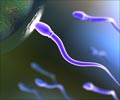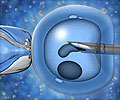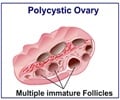Defective microtubule alignment during egg cell meiosis in older women could be a key reason for a reduction in fertility that occurs with increasing age.
- Fertility decreases with increasing age in women.
- Current research identifies possible defect in eggs that could be preventing pregnancy
- The recent discovery opens up potentially novel fertility treatments for such women
Reason for the Study
It is already known that as a woman becomes older, her eggs are at an increased risk of becoming aneuploid, since the mechanism by which the chromosomes are held together goes awry. This is referred to as ‘loss of cohesion’ hypothesis."One of the main causes of female infertility is a defect in the eggs that cause them to have an abnormal number of chromosomes. These so-called aneuploid eggs become increasingly prevalent as a woman ages. This is a key reason that older women have trouble getting pregnant and having full-term pregnancies. It is also known that these defective eggs increase the risk of miscarriage and can cause Down's syndrome in full-term babies" explained Fitz Harris.
Methods and Findings of the Study
During their experiments, the research team analyzed the cell division in the eggs of older mice and observed that there was another problem namely defective alignment of microtubules leading to defective spindle formation.- The defective spindle formation was noted in nearly 50 percent of the aged mice according to the study authors.
- Interestingly, they observed that the defective spindle formation persisted in older mice which contained a young nucleus confirming that increasing maternal age affected spindling irrespective of the age of the chromosomes in the nuclei of the egg.
The scientists conclude that defective spindle formation due to cell division going haywire could also occur in humans and might possibly explain why older women have difficulty becoming pregnant.
What is Aneuploidy?
Aneuploidy refers to the presence of abnormal number of chromosomes in the cell, either 45 or 47 in humans, instead of the usual 46 (23 pairs). Due to some defect, during certain divisions of meiosis, instead of all 4 gametes containing equal number of chromosomes, one gamete ends up getting all the chromosomes of a pair, while the other gamete has no chromosomes at all.
The most frequent aneuploidy in humans is trisomy 16 and fetuses affected with the full version of this chromosome abnormality do not survive to term. The most common aneuploidy that proceed to term with infants surviving is Trisomy 21, which is found in Down’s syndrome, affecting 1 in 800 births. Trisomy 18 (Edward’s syndrome) occurs in 1 in 6,000 births, and Trisomy 13 (Patau Syndrome) affects 1 in 10,000 births.
What are Microtubules and Spindle Formation?
Microtubules are cylindrical structures in the nucleus of the cell that arrange themselves during cell division in the form of a spindle. Spindle formation is necessary to ensure that the chromosomes from the parental cell is equally distributed into the 2 daughter cells. This process is called chromosomal segregation.
In conclusion, though more research to understand the exact molecular mechanisms leading to defective spindle formation may be necessary, it may one day become possible to correct the errors and ensure formation of healthy eggs that can be fertilized and proceed to full term pregnancy. This discovery could spur the development of newer fertility treatments offering hope to thousands of older women.
In the words of one of the authors, Fitz Harris, "We are currently exploring possible treatments for eggs that might one day make it possible to reverse this problem and rejuvenate the eggs.”
References:
- Aneuploidy - (https://en.wikipedia.org/wiki/Aneuploidy)
Source-Medindia
















